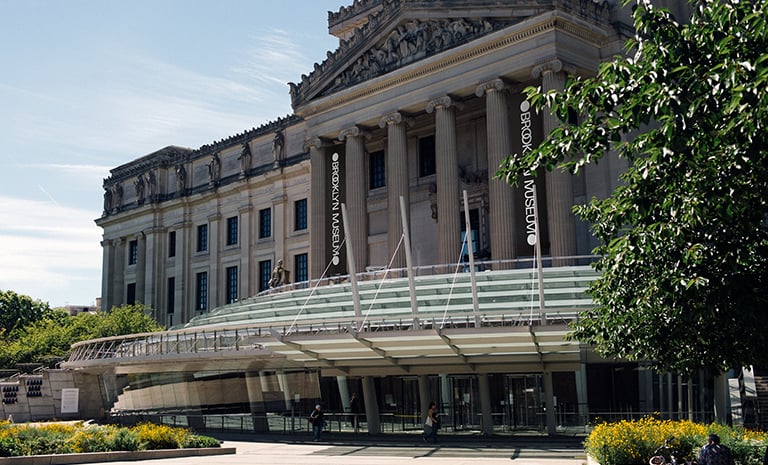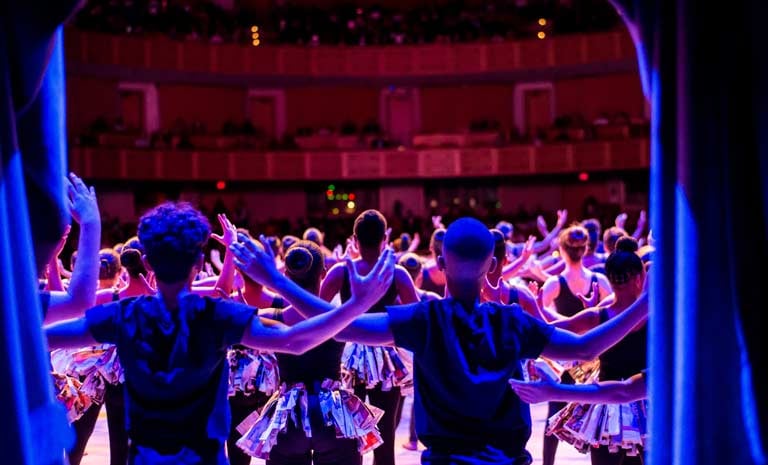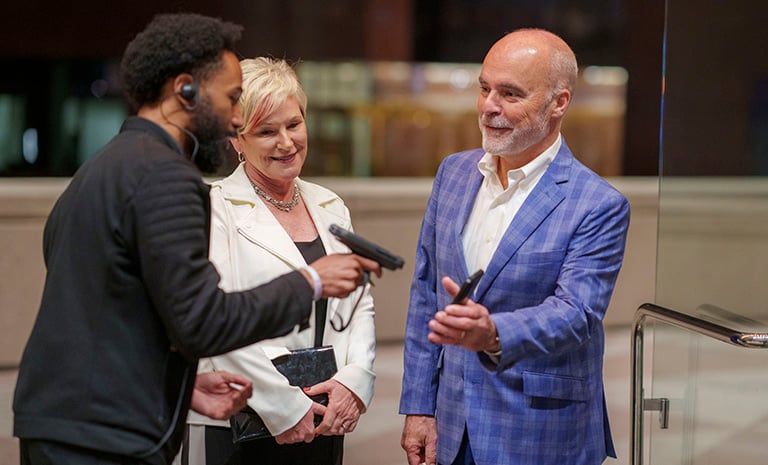Tessitura
Museums
Technology
Ticketing and Admissions
Audience Development
Fundraising
Article
Success Stories
f0a165df-a3ed-4f13-84b6-ebe56662dc05
7 min
https://edge.sitecorecloud.io/tessituraneab9a-tessiturane5642-staging-5396/media/Images/Success-Stories/Brooklyn-Museum-v2-768x465px.jpg?h=465&iar=0&w=768
Why a unified view helps Brooklyn Museum plan a visitor-centered, digitally forward future
Evolution and transformation
10/31/2024
7 min
The Brooklyn Museum story has long been grounded in two themes: evolution and transformation.
What began as a public circulating library has become a global cultural hub that frequently redefines the role museums can play in society. It’s what the museum team calls “a Brooklyn state of mind.”
So as staff approached a defining milestone — the celebration of the museum’s 200th anniversary across the 2024-25 year — they embraced the opportunity to bring those themes to all areas of their operations. They set an ambitious goal: being visitor-centered and digitally forward in everything they do.
Building a strong foundation
The team started with strong roots. The museum is the only one in New York City that combines broad historical and contemporary collections with a mission to bring those works into conversation with the questions of our time. With a loyal visitor base in Brooklyn and beyond, the museum saw pre-pandemic audiences and contributions double and earned income grow.
As staff thought about the future, they identified several priorities that built upon the museum’s reputation for creating distinctive, mission-aligned experiences and developing art for social change. But to better engage their diverse communities and grow their advocate pool, they knew they also needed a strategy to ensure data informed all decisions and business practices.
Charting a (bumpy) path forward
For the Brooklyn Museum, propelling success into a third century meant looking at how visitor insights could be better leveraged to grow loyalty and engagement. After identifying immediate needs and mapping long-term wishes, the museum embarked on a multiyear project to implement a new customer relationship management platform (CRM).

Alexander Valenzuela
They chose a well-known commercial CRM that integrated with other ancillary systems, such as ticketing. However, after investing nearly two years’ time and considerable resources into the initiative, the team experienced many challenges that emerged just weeks after launching their new systems.
Alexander Valenzuela, now the museum’s Director of Customer Relationship Management, was brought on board soon after that go-live. His priority was to assess the issues and unmet needs. After talking with stakeholders across the organization, he faced a challenging reality: Despite the best intentions, the new systems were not the right choices. They were not going to meet the short-term essentials and long-term vision of the museum.
Several pain points drove that decision:
- Financially, integrating multiple systems was very expensive and exceeded initial estimates.
- Critical business reports that had been promised during the project’s discovery phase were never delivered.
- The functionality was not built for nonprofit fundraising and couldn’t handle all of Brooklyn Museum’s requirements.
- Plus, the CRM didn’t integrate well with other needed systems, including the ticketing platform.
“It came down to the ROI,” Alex said. “Sure, there are leading CRMs in Fortune 500 companies in the world. But if we had continued down that path, it was clear we would not be able to reap our efforts back for quite a while — if ever.”
Beyond the financial risks, the museum’s team lacked confidence in the commercial provider’s fit for their business.
“The support team I interacted with did not know museums,” Alex said. “Despite being such a large company, they don’t know the market for the product they were promoting for the sector. It was a huge red flag. We thought, even if we could afford it, do we really want to go down that path and work with a vendor that doesn’t know our market and doesn’t know what we really need?
“Everything was going to be bespoke,” he continued. “Nothing was really out-of-the-box, other than the shell of the architecture. That creates a cascade effect. Having a bespoke system in a custom way works well only if you have the money and the fuel and the energy to support it. But we don’t.”

Pivoting to a single, unified solution
The museum made the difficult decision to pivot. According to Alex, “That was the point in time we switched gears, to where I could present the case to the wider museum stakeholders to say, ‘We need to decommission and export all our data. We’re going to save and salvage all the mapping work that we’ve done, which will come in handy down the road, but we need to find something better, because this is not it. This is not sustainable.’”
Alex got to work exploring alternative solutions, involving all the original stakeholders. At that point, the museum supported more than a dozen disparate systems containing customer data, including development transactions, ticket and event sales, e-commerce solutions, retail purchases, email and SMS providers, financial reports and many stand-alone spreadsheets. Most of them didn’t integrate well or provide a holistic view of their members and visitors.
“Having seen it implemented at all kinds of museums and organizations, I’m totally confident Tessitura can manage anything and is very future proof.”
Ultimately, Brooklyn Museum made the cross-departmental, democratic choice to switch to Tessitura for their CRM, ticketing, memberships, fundraising and more. In making that choice, the team evaluated several factors.
A unified approach
With Tessitura, the museum can bring all transactions and visitor information into one unified view.
“We want to empower the CRM to be a true all-in-one CRM,” Alex said. “It’s a connective fabric across the museum to be a source of truth for everything. Having seen it implemented at all kinds of museums and organizations, I’m totally confident Tessitura can manage anything and is very future proof.”
Functionality that just works
The museum also benefits from standard Tessitura functionality supporting all departments’ needs. “Having something more out-of-the-box has always been my mantra,” Alex said. “It helps significantly with everything from training and support to upgrades. All that adds up.”
Mission compatibility
Finally, the museum found alignment in Tessitura’s unique business model as a nonprofit technology company. “The mission that Tessitura has is very aligned with the Brooklyn Museum regarding everything from prioritizing community to empowering users to do their jobs really well in an effective manner. That, ultimately, raises revenue and the ability to fund our mission. Tessitura understands how the sector works and why the sector works.
“For example, for me, customer service is the underpinning of all decisions and all things that happen in Tessitura,” Alex continued. “How is this going to affect the visitor or the member at the end of the day? If it’s a net positive for them, then we’re on the right track. So, ultimately, feeling that desire from Tessitura — and especially for a large organization like Tessitura to keep that at the essence — is huge.”
“Tessitura understands how the sector works and why the sector works.”
Creating a new roadmap
In addition to implementing new technology, the museum also worked with the Tessitura team to develop a CRM roadmap. This ensures they capture and analyze the right measures to inform future decisions.
“We collaborated internally and with Tessitura to know what key performance indicators we need to aim for,” Alex said. “The only way to know if we reach our ROI is if we set those goals and KPIs ahead of time. That way we know what to expect and to gauge afterward. Tessitura helped shepherd us. They not only brought in great information we could share with the team but also helped us build that from a department level to the museum level.
“Creating the customer roadmap and building that into our reporting has been a game changer,” he continued. “We did not have that insight before Tessitura. We had bespoke reports, and they didn’t align with other systems. It was very hazy. Going from there to where we are now is night and day.”
“We did not have that insight before Tessitura. ... Going from there to where we are now is night and day.”
Investing in the future
With visitor experience at the core of all museum decisions, Alex sees huge potential with Tessitura to help his team simultaneously improve the visitor experience, maintain accessibility for the broader community and grow revenue for the museum.
For example, the team also installed kiosks to accelerate on-site ticket sales. Because they are integrated with Tessitura and use the same API, the museum can offer the same pay-what-you-wish pricing model across the kiosks as they do at the visitor experience desk and on their website, displaying the full, recommended price in addition to the flexible options. In just a few months, they saw their average ticket price increase from roughly $8.70 to just over $12.
And with Tessitura in place, the museum found an engaged and collaborative community of colleagues for networking and inspiration. This helps Brooklyn staff feel supported for whatever the future brings.
“As the Brooklyn Museum continues through our 200th anniversary, our focus is always community and understanding where there are opportunities to collaborate with our vendors, especially Tessitura,” Alex explained. “I’m always promoting the Tessitura forums, as well as the affinity groups Tessitura has. It’s another great asset that’s not just the CRM we’re buying, right? It’s a whole package that aligns with our mission. That’s also what we’re investing in, and I think using Tessitura reflects our commitment to that mission. I’m always looking forward to what Tessitura has around the corner, so we can assist our visitors best.”
“I’m always looking forward to what Tessitura has around the corner, so we can assist our visitors best.”
Topics
Museums
/Technology
/Ticketing & Admissions
/Audience Development
/Fundraising

The Arsht Center moves to the cloud
Arts & Culture / Business Strategy / IT & Systems / Technology
How Tessitura’s hosting and payment processing make it easy to improve infrastructure

No pain, all gain
Arts & Culture / Marketing / Ticketing & Admissions / Audience Development
How secure digital ticketing helps arts and culture organizations grow revenue by knowing their entire audience

Little things add up
Arts & Culture / Business Strategy / Fundraising
How Shedd Aquarium uses microphilanthropy to raise revenue and increase access